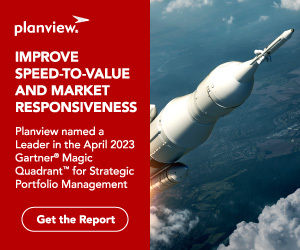The starting point for most conversations about a candidate drug’s sales potential is a chart of drug sales by segment and time—month/quarter/year, depending on the planning horizon. Digging deeper, you are ‘treated’ to a huge table, or perhaps a bunch of bar charts, tallying the number of afflicted people, those afflicted who have insurance, those with insurance who are good candidates for a specific class of therapy, and so on, leading to an estimate of patients who will receive the firm’s medicine. Although it’s all the right information, visualizing across multiple time periods, multiple market segments, and multiple filters is an eye-crossing challenge. Like the visuals themselves, conversations jump and dart around unsatisfyingly, from “Wait, did we look at healthcare access in the out years?” to “What was the total incidence again?” until the topic is lost.
Having participated in numerous drug development review and sales planning meetings and having interviewed key stakeholders at multiple firms, we understand first-hand how long it can take participants to level-set on a drug’s go-to-market story. Yet without a concise go-to-market narrative, building consensus around how to improve a drug’s future prospects just isn’t possible. We had a hunch that the right visualization could make a big difference in these meetings, and that got us thinking…
The result is shown in the picture on the right. This visualization has several key benefits over the old tables and bar graphs many teams use:
- At the top of the page, we added a small multiple of sparkline charts to display each segment’s filters over time. This allows executives to sanity check “hot-button” filters such as access to health care, and ensure that all filters are neither too optimistic nor pessimistic. It also allows for a quick scan of all filters by the forecasting team to ensure that in a complicated product segmentation no filter has been left behind.
- We chose a Sankey diagram to depict the flow of patients through each filter step. This allows executives to rapidly assess which filters are the most restrictive on both an absolute and a relative basis. It also allows multiple disease segments to be rendered in the same diagram, making cross-segment comparisons easy. Hovering over any part of the flow shows the number and percentage of patients moving from one stage to the next of the flow.
- To enable realizations about the evolution of the patient base over time, we allow the Sankey diagram to be animated over time with a slider. After clicking on the slider, participants can use the arrow keys on the keyboard to quickly move through the flow diagrams for different years. Teams can observe, in real time, how the interplay of filters for each segment shrinks and grows their product’s market share.
- The final markers on the right show not only product sales, but also the sales of the closest competitors. This yields instant insights about the market segments that contribute most to our sales vs. our competitors.
We think that all of these features play a key role in providing a compelling narrative for a product, and they uniquely enable product teams, managers, and executives to reach a common understanding about each product’s potential and risks. As I’ve said before, storytelling is key to building consensus and motivating a team to take an appropriate, calculated risk, moving away from the status quo and into uncharted territory with potentially large benefits for the firm.
The more general point is not that Sankey or sparkline charts are the answer for every question. Rather, each team needs a set of visualizations that are tailor-made to the decisions they face, with a special understanding of what makes those decisions difficult. The key is to understand the specific issues the team is grappling with and to gear the processes and tools to structure conversations and bring shared understanding. It is that shared understanding, above all else, that leads to effective, confident decisions.
At Enrich, our sales forecasting software is designed to integrate the latest forecasts with analytics that lead our clients into the most productive, data-driven conversations possible. We are on a perpetual quest to improve the quality of those conversations at each of our clients, and finding something that lays bare, in a single glance, the critical facts driving a decision. When that happens, it’s like striking gold.
To learn more about using our sales forecasting software, the Enrich Analytics Platform, for sales planning, take a look at this post on reconciling country and regional forecasts with headquarters estimates. Or contact us and you’ll see how our tools can help you get more from your sales planning process.





